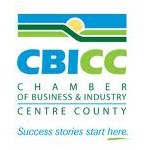Hidden Fees! They are all over the place when it comes to investing.
At least once a month, an investor tells me that another advisor offered managed accounts where the one and only portfolio cost would be the advisor’s fee. Often the fee quoted would be somewhere between 1.25% and 2.25%, plus or minus a little bit. That other advisor would say that there are no other costs and that everything else is free or all inclusive and that absolutely no other expenses would apply.
But that is NEVER the true case. In the best of circumstances, an advisor is just not aware of the other expenses. In the worst of circumstances, since the other charges are mostly hidden, why bother to disclose them.
In any case, the hidden charges can easily double what an investor is really paying and the investor is never really aware that the other costs are eating into his or her portfolio. When added up over the years, the aggregate of these hidden charges can be daunting, especially in situations where an advisor uses active management or market timing strategies.
This is also true of many no-load mutual funds. No load simply means no sales charge. It says nothing of the other expenses. Of course, you can find what’s called the Management Fee in the fund’s prospectus, but the hidden fees are buried in another document. That document is called the Statement of Additional Information or the SAI. Ever hear of it? Neither have many advisors or most investors. Interestingly, the Statement of Additional Information generally has more pages than the fund prospectus.
According to The Investment Answer, an excellent 88 page guide to successful investing by Dan Goldie and Gordon Murray, the 3 costs to watch out for, especially when working with advisors pitching active management strategies, are the following:
1. Higher Management Expenses: “It is more costly for an active manager to employ high-priced research analysts, technicians, and economists, all of whom are searching for the next great investment idea.”
2. Increased Turnover: “As active managers try to provide superior returns, they tend to trade more often and more aggressively than passive managers. This usually means paying greater brokerage commissions, which are passed on to shareholders in the form of reduced returns.”
3. Greater tax exposure: “Given that active managers trade more often, it follows that taxable investors will incur accelerated capital gains as a result.”
By the way, if you would like your own copy of The Investment Answer, let me know and I will see that you get it. It’s a superb book.




 Clarity Coaching Tips
Clarity Coaching Tips Common Sense Videos
Common Sense Videos It’s Your Money
It’s Your Money
